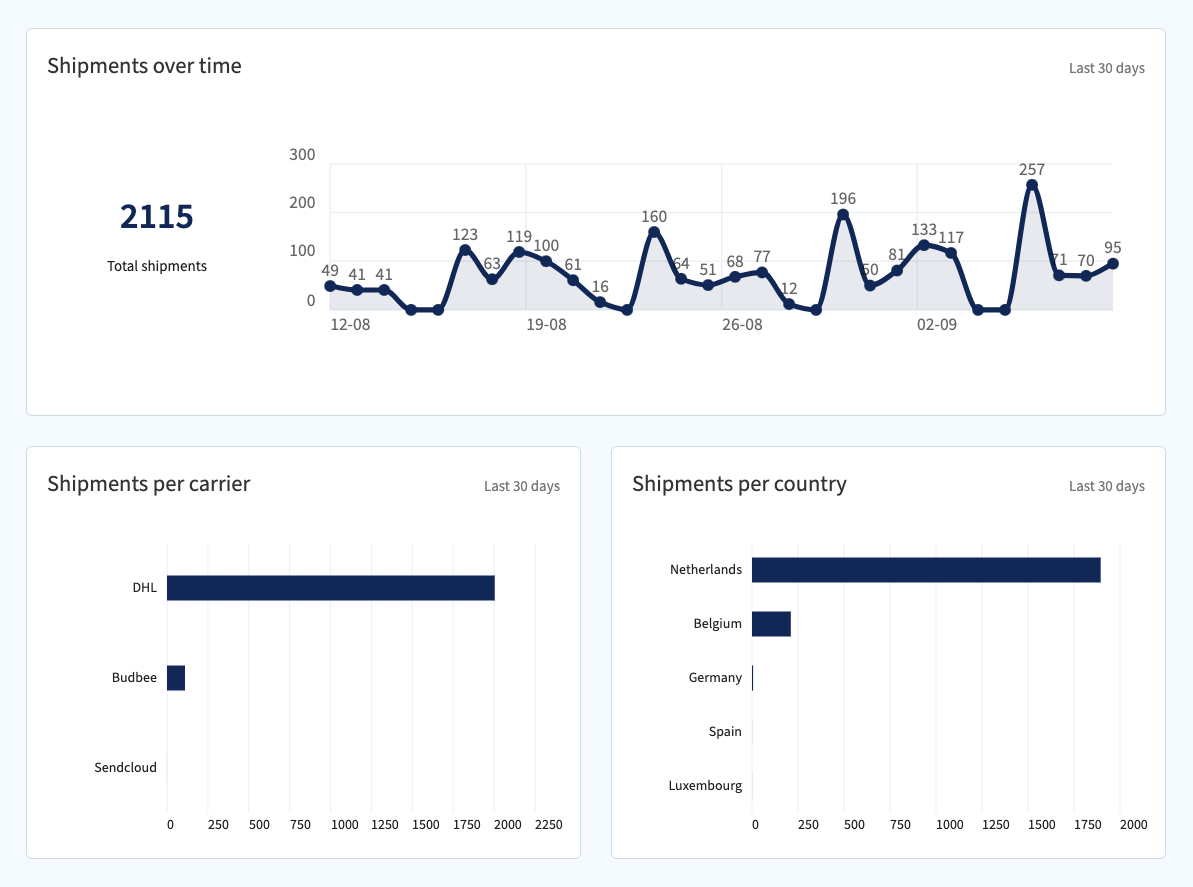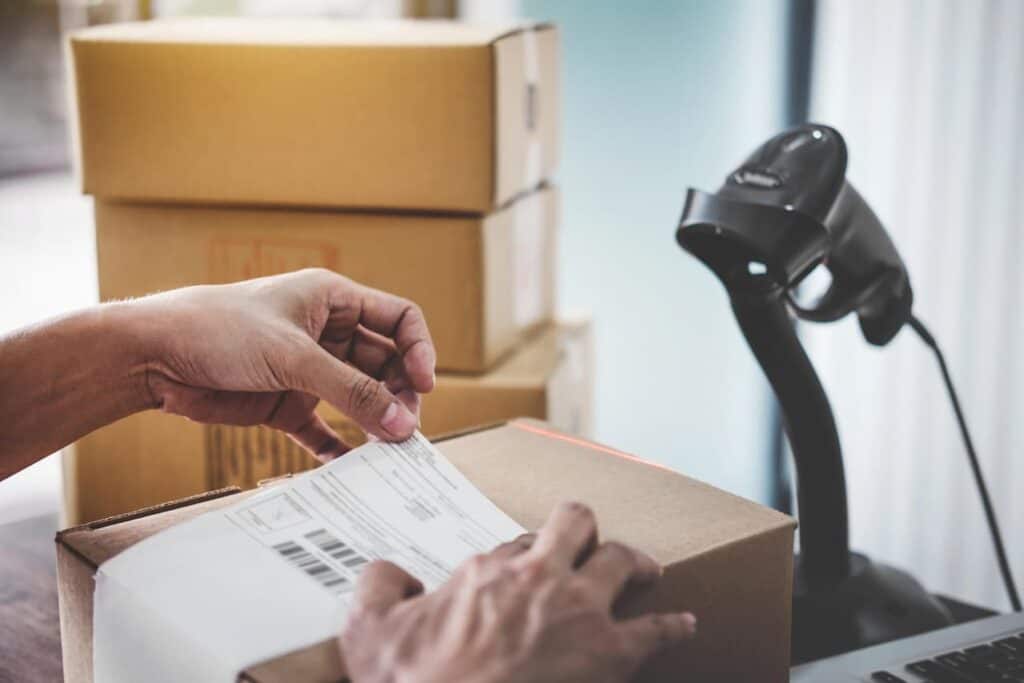Returns on online purchases in the United States soared to nearly $248 billion in 2023 — about a 16.4% increase compared to the previous year.
Today’s online shoppers expect a hassle-free returns process anytime a product doesn’t meet their exact wishes. That means giving them a returns experience that is fast, efficient and often free of charge.
Navigating these financial pressures while meeting the high expectations of customers is crucial for your business — and we’re here to help you get it right. In this article, we’ll get you fully up to speed on how to set up a streamlined, customer-friendly e-commerce returns management strategy.
Returns management: The basics
Let’s start with the fundamentals: What is e-commerce returns management and why does it matter?
What is returns management?
Returns management means taking a consistent, systematic approach to return shipments (items returned to your company by customers, whether for an exchange, refund or repair).
Structured, planned and monitored returns management is an important part of any e-commerce retailer’s reverse logistics.
Why is returns management important?
The way you manage returns says a lot about your company. By offering an effective returns process, you show that you care about your customers’ experience. This is a proven strategy for enhancing customer trust, boosting satisfaction and ultimately increasing retention.
On top of all that, effective product returns management ensures your company’s returning merchandise is handled safely, efficiently and cost-effectively. This helps your company keep return shipping costs under control.
What are the best e-commerce returns management strategies?
When it comes to choosing returns management strategies, most e-commerce retailers use a combination of these two approaches:
Preventive returns management
A preventive returns management strategy means you help ensure your customers make the best purchasing decision. This prevents unnecessary returns from happening in the first place. Some of the main tactics behind this strategy include offering detailed, accurate product descriptions and excellent presales support.
Restrictive returns management
A restrictive returns management strategy means ensuring you have a clear, effective returns policy in place for when a return cannot be avoided. This includes tactics like using return merchandise authorisations (RMA) and customer-friendly return shipping solutions, like pre-made shipping labels and a self-service return shipping portal.
3 tips for improving your returns management
Returns are a fact of life for e-commerce retailers, so why not make the best of it? Leverage returns management as an opportunity to offer your customers the best possible shopping experience that will make them come back for more.
Here are 3 tips to help get you started:
Tip 1: Offer a better pre-sales experience
Every e-retailer wants to lower their returns rate. One of the most effective ways to do that is to offer a better pre-sales experience. You’ll want to provide as much information and support as you can to help your customers choose the right product. This reduces the risk of unpleasant surprises when they receive their order.
- Ensure product descriptions are accurate and up to date.
- Provide easy-to-find product information and FAQs
- Include exact measurements
- Offer easy-to-read size charts (for fashion and accessories)
- Provide videos or 3D/360-degree illustrations showing the product in real-life settings
- Offer 3D mock-ups (for furniture, home furnishings)
- Make it easy to contact your customer support with pre-sales questions (display your chatbot or support contact details clearly on each product page)
Tip 2: Clearly display your return policy
Another part of managing customer expectations is to clearly display your returns policy.
- Include a link to your returns policy (as well as your shipping policy) on every product page, or at least make them easy to find in your page’s header or footer.
- Link to your returns policy in your order confirmation email and other aftersales notifications.
- Include an easy-to-read FAQ that covers your returns policy.
If you need help creating a returns policy, read our full article to find out how to write a returns policy that covers all the essential topics.
You can also use our convenient Returns Policy Tool below to create your detailed returns policy in minutes:
Tip 3: Follow best practices from major e-commerce retailers
Major e-retailers like Amazon, H&M and Asos set the tone for what online shoppers expect. So, to stay competitive and in-line with current return shipping trends, try following their lead.
- Amazon offers free returns on most items delivered to an address in the US. It’s one of the reasons why they’ve been topping the rankings of most-visited retail sites in the US for years.
- Free shipping is not necessarily a must. 79% of fashion retailers, including H&M, now charge a return fee for returns, suggesting a shift in the industry.
Consumers are also becoming more aware of the environmental impact of unnecessary return shipping, which means they are becoming increasingly mindful about wasteful online shopping habits, like default order-and-return shopping for fashion. This refers to a common practice where consumers purchase multiple items with the intention of returning some or all of them.
7 tips for handling international returns management
If you’re selling to an international audience, the returns management process can become even more complex. You’ll want to ensure you’re catering to local expectations – and following local e-commerce laws.
Here are 7 tips to streamline your international returns process:
- Comply with returns regulations: If you sell to customers in EU countries, they are entitled by law to return items within 14 days of sale with no stated reason (a so-called ‘cooling-off’ period). That doesn’t mean you have to offer free return shipping – it just means you must be prepared to receive items back from your customers during that period. The cooling-off period varies for countries outside the EU, so be sure to research local rules for the countries you’re targeting.
- Choose a reliable 3PL provider: To manage returns as efficiently as possible, work with an international third-party logistics (3PL) provider that has the carrier network, local presence, and technical capabilities to offer a streamlined process for both you and your customers.
- Use a multicarrier approach: Work with multiple international shipping carriers (either directly or through your 3PL) to efficiently handle returns from different countries.
- Insure valuable shipments: Reduce the risk of loss or damage by insuring return shipments. You can set automatic value thresholds for insuring packages with the right shipping solution.
- Offer a returns portal: Offer your customers a self-service online returns portal. This is a simple solution that streamlines your returns process and saves time and energy for everyone involved.
- Provide language-specific support: Offer support in your customers’ native languages to ease communication and prevent misunderstandings.
- Adopt a country-specific strategy: Tailor your international returns management approach to each country’s unique preferences, infrastructure and standards.

Professionalize your e-commerce returns management with Sendcloud
Even if you’re offering the best pre-sales service, some returns are still unavoidable. When managing return shipping, it helps to have a specialized software solution on your side. Sendcloud’s returns management software gives you and your customers everything you need to ensure a smooth, user-friendly returns experience.
Sendcloud enables you to easily integrate a customer-friendly returns portal into your online store. Customers can use the portal to quickly set up a return, fully in line with your returns policy. See an example of what the Sendcloud returns portal looks like.
The portal makes setting up returns simple:
Step 1: What would you like to return?
The customer sees a list of items that are eligible for return. They simply choose the item(s) they want to send back.
Step 2: Select your return reason
Next, a list of possible return reasons appears. The customer can simply choose the reason why they’re returning each item.
Step 3: How would you like to be refunded?
Customers choose their preferred refund option (for example, refund, credit or exchange).
Step 4: How would you like to return?
Next, the portal offers customers a choice of return shipping options based on your returns policy.
Step 5: Summary
To minimize the risk of mistakes, a summary now appears for the customer to review before completing the process.
Step 6: Confirmation and next steps
Once the customer submits the details shown in the summary, they see a clear confirmation message. If you offer a prepaid shipping label, they can immediately download it here. The customer also receives further instructions by email.
Seamless integration with your shop system
Sendcloud offers seamless integrations with over 50 of the world’s most popular shop systems.
The Sendcloud API lets you integrate over 100 carriers into your return shipping process.
Get more out of your data with Sendcloud Analytics
Continually optimize your return shipping and customer relations management with data insights.
Sendcloud’s Analytics dashboard gives you a complete overview of your return shipping stats, so you can identify areas for improvement and continually improve efficiency.

Ready to start optimizing your return shipping strategy?
Create your free Sendcloud account now and start taking advantage of our returns management solutions! Looking for some good advice? Book your personal demo with one of our shipping experts. We’ll show you how to get the maximum benefit out of our return shipping tools.

















